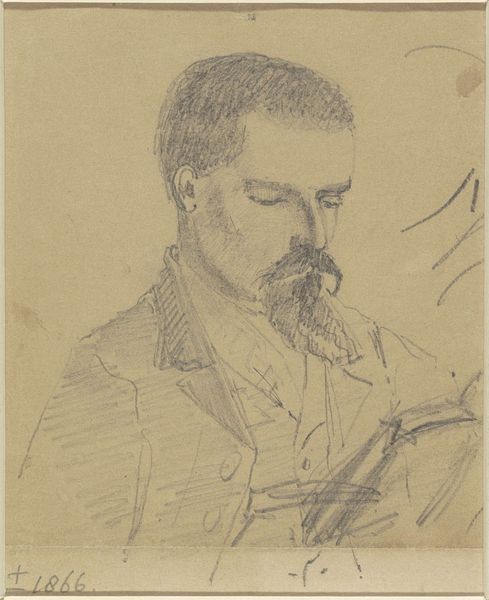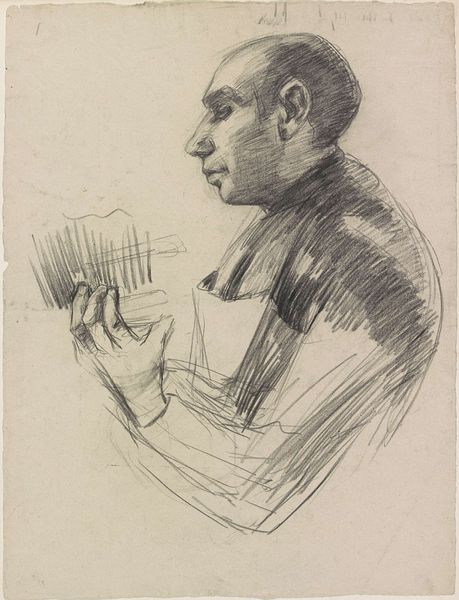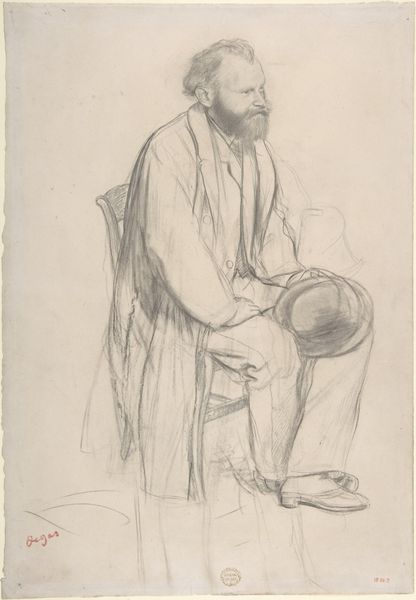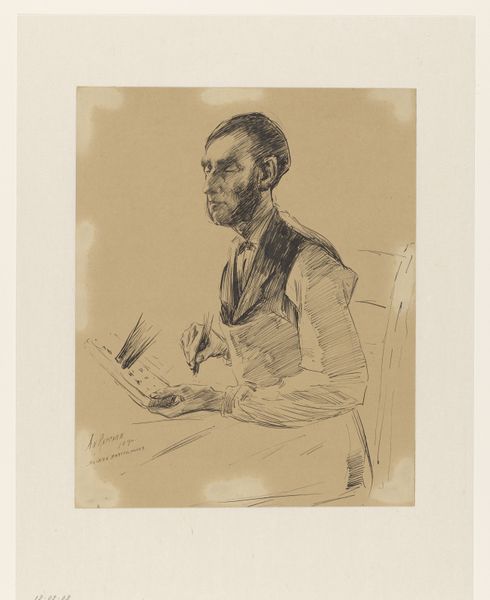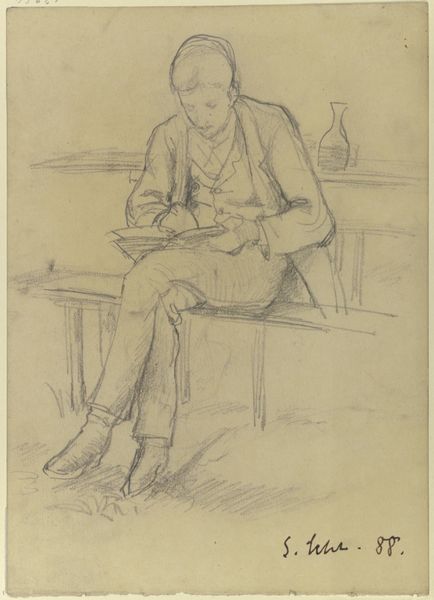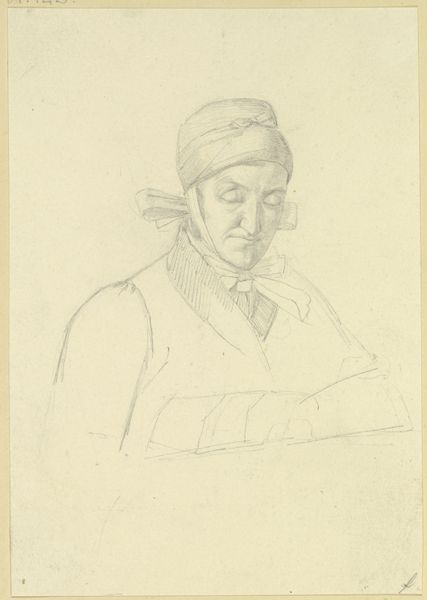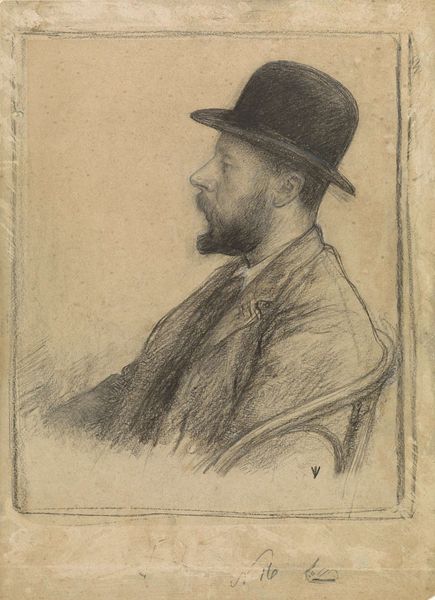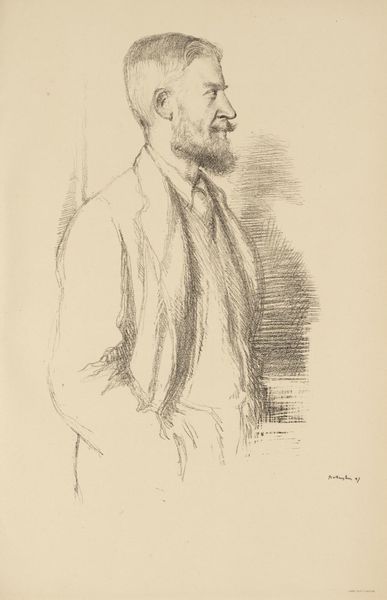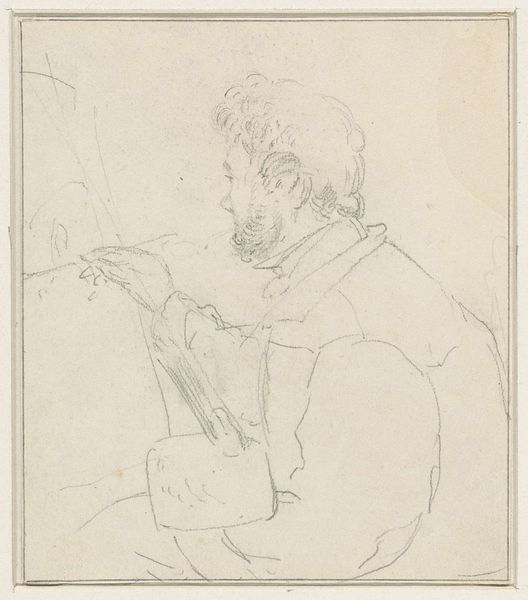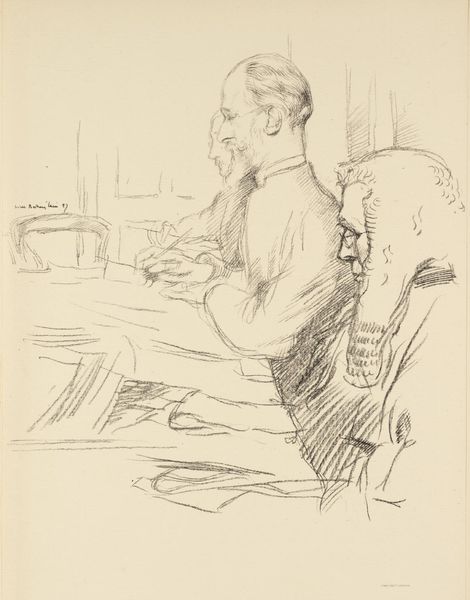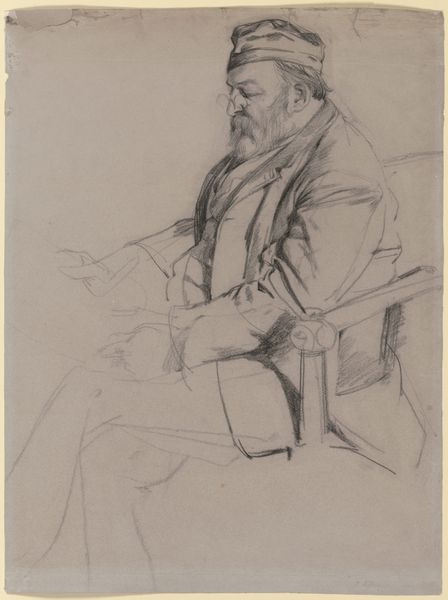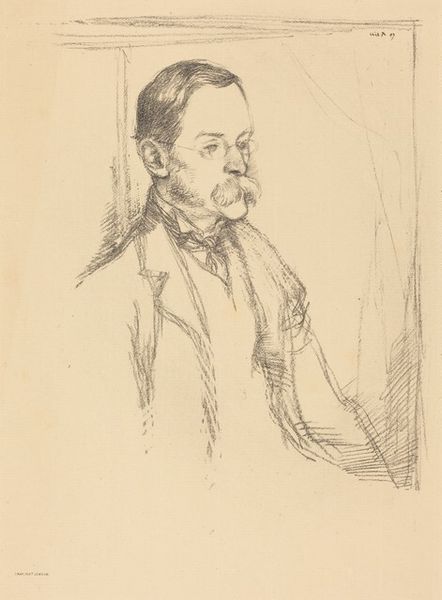
drawing, pencil
#
portrait
#
pencil drawn
#
drawing
#
pencil sketch
#
pencil drawing
#
pencil
#
portrait drawing
#
realism
Dimensions: height 410 mm, width 292 mm
Copyright: Rijks Museum: Open Domain
Curator: Standing before us is a work attributed to Theo Colenbrander, entitled "Portret van Edzard Koning," estimated to have been created sometime between 1851 and 1930. It's rendered in pencil. Editor: It has an unfinished quality, a sketch in progress, with the subtle gradations of the pencil work creating a delicate and pensive atmosphere. There is an immediate sense of calm, maybe contemplation. Curator: Given the period, it is interesting to consider who Edzard Koning was within the Dutch socio-political landscape. What roles did individuals like him play in shaping cultural or intellectual discourse, and how might this portrait reflect or challenge those norms? The gaze turned down implies someone of letters. Editor: From a purely structural viewpoint, the framing is compelling, literally a frame within a frame, isolating the subject while hinting at a broader environment. Notice how Colenbrander uses varied pencil strokes—short, deliberate hatchings for the vest versus looser lines defining the arms and legs. There's a clear intention behind the different qualities of lines in different parts of the subject's form and presentation. Curator: That interplay between definition and ambiguity is very striking. It raises questions about representation and the power dynamics inherent in portraiture. The very deliberate finishing of the face suggests Colenbrander wishes for the viewer to examine, to find social clues, to read Koning's status within the facial lines. We also should not ignore the influence of race in this time, considering who got to be seen, and who had a veil dropped over them. Editor: Precisely. And considering the incomplete parts, it directs us to consider how Colenbrander chose to portray him as much as it's about any historical or social read; it's about an aesthetic preference and artistic license of leaving some areas more raw, more visually interesting through less rendering than it would have needed to portray a finished composition. Curator: Well, this offers us more insight into both the subject and the choices involved in depicting him during that era, reminding us of the multiple narratives a portrait can embody. Editor: Yes, looking closely at its elements shows how simplicity and intentional choices can have powerful compositional consequences.
Comments
No comments
Be the first to comment and join the conversation on the ultimate creative platform.
